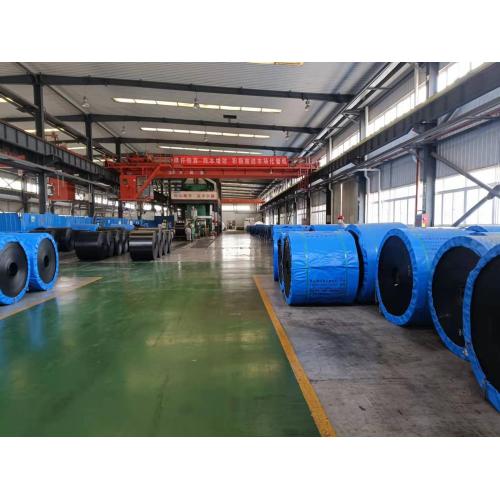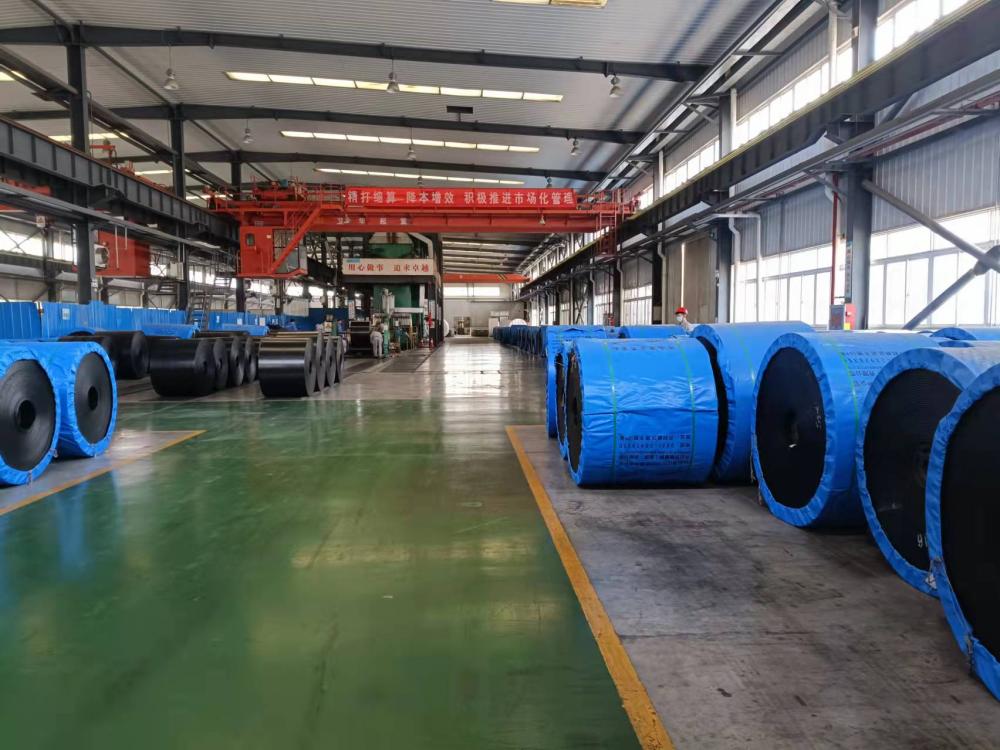




Min. Order:100 Meter
Transportation:Ocean
Port:Shanghai Port,Ningbo Port,Qingdao Port
$24≥100Meter
Model No.: TT-T003
Brand: Iron Tower
Place Of Origin: China
Processing Service: Moulding, Cutting
Brand: Iron Tower
After-sales Service: Online Technical Support, Onsite Training
Warranty Service: See the corresponding standard or executed according to the contract requirements
Shape: Roll
Packaging: UV protection packaging cloth
Productivity: Month supply capacity of 50000
Transportation: Ocean
Place of Origin: China
Supply Ability: Month supply capacity of 50000 meters
Certificate: ISO9001:2015
HS Code: 40101200
Port: Shanghai Port,Ningbo Port,Qingdao Port
PVC solid woven rubber conveyor belt – Durable, Efficient, and Engineered for Industrial Performance
This high-performance Conveyor Belt combines advanced materials with robust engineering to deliver reliable operation in demanding environments. Whether you're handling dry goods or managing wet conditions, our solid woven PVC and PVG belts offer tailored solutions based on load capacity, incline angle, and durability requirements. Designed for industrial automation, material handling, and logistics applications across global markets, this product ensures consistent performance while meeting international safety and efficiency standards.
Key Features:
Detailed Specifications:
The PVC version offers a cost-effective solution for low-moisture applications, featuring a 1.0 + 1.0 mm thickness and a minimum belt embryo mass of 11.4 kg/m² for models like 1000S. It supports longitudinal tensile strength of at least 1000 N/mm and transverse strength of 300 N/mm, with elongation rates exceeding 15%—ideal for medium-duty conveyors in food processing, packaging, and light manufacturing.
In contrast, the PVG variant introduces a rubberized surface layer that enhances grip, abrasion resistance, and water tolerance. With a cover density of 1.45 kg/m³ and a higher maximum incline capability (up to 20°), it's suited for mining, agriculture, recycling, and heavy-duty logistics where moisture exposure is common. The 1400S model, for example, delivers 1400 N/mm tensile strength, 350 N/mm cross-directional strength, and 1600 N tear resistance—making it a top choice for steep-angle conveying tasks.
Industrial Applications:
These belts are widely used in sectors such as cement production, grain handling, textile manufacturing, and automotive assembly lines. Their ability to operate efficiently in both dry and damp settings makes them versatile assets in global supply chains. For instance, the PVG type excels in coal transport systems due to its flame-retardant properties and resistance to oil-based contaminants, while the PVC version serves well in clean-room environments like pharmaceutical packaging where chemical inertness is critical.
User Feedback Highlights:
Operators in European and North American facilities report reduced maintenance intervals, fewer belt failures during peak production cycles, and improved energy efficiency thanks to smoother running surfaces. One user noted, “Switching from traditional rubber belts to this solid woven design cut our downtime by over 40% in just six months.” Another praised the PVG option’s reliability in humid climates, stating, “It performs consistently even when exposed to condensation and frequent cleaning routines.”
Frequently Asked Questions:
What’s the difference between PVC and PVG conveyor belts? PVC belts use a plastic outer layer suitable for dry environments, whereas PVG belts add a rubberized top layer for better traction and moisture resistance, often referred to as "flame-retardant" types in technical documentation.
Can I install these belts on existing equipment? Yes, they’re compatible with most standard conveyor frames and drive systems. However, ensure your drum diameter matches the recommended minimum (e.g., 400 mm for 800S, 750 mm for 1400S).
Are there environmental benefits? Both types comply with RoHS and REACH regulations, minimizing harmful emissions during manufacturing and disposal. Their long service life also contributes to lower waste generation compared to disposable alternatives.
How do I select the right model? Consider your required tensile strength, inclination angle, and operating environment. For dry indoor setups, go with PVC; for outdoor or wet conditions, choose PVG. Refer to the detailed table for exact specs per model (e.g., 800S to 1800S).
Whether you need a budget-friendly PVC belt for basic conveying or a high-grade PVG unit for extreme conditions, our solid woven rubber belts provide engineered precision, consistent performance, and long-term value across global industrial operations.